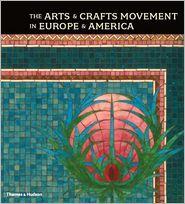The first assessment of the truly international influence of the Arts and Crafts movement, published to accompany a groundbreaking exhibition. At the turn of the last century, the Arts and Crafts movement transformed not only how objects looked but also how people looked at objects. It provided a framework for essential issues that are still debated today: the conflict between standardization and individuality, the question of whether a one-of-a-kind handcrafted object is superior to a mass-produced one, and the problem of defining what kind of design most benefits society. As the most industrialized country, Britain was also the first to generate a movement to counter what was seen as the malevolent effects of mass production. Protagonists such as John Ruskin and William Morris championed "joy in labor"-the moral and spiritual uplift that would come with the revival of making objects by hand. The improvement of working conditions, integration of art into everyday life, and an "honest" aesthetic resulting from the use of indigenous materials and native traditions were also central to the movement's philosophy. At the end of the nineteenth century, these Arts and Crafts ideals were appropriated and adapted by the young avant-garde throughout Europe and the United States. With 260 objects-furniture, ceramics, metalwork, textiles, and works on paper-from Britain, Ireland, the United States, France, Belgium, Germany, Austria, Hungary, Scandinavia, and Finland, this is a visually stunning, definitive survey. The book features masterworks by the best-known designers of the period, such as William Morris, M.H. Baillie Scott, Henry Van de Velde, Peter Behrens, JosefHoffmann, Eliel Saarinen, Gustav Stickley, Greene and Greene, and Frank Lloyd Wright, as well as lesser-known examples that have never been displayed together. 360 illustrations, 300 in color.


